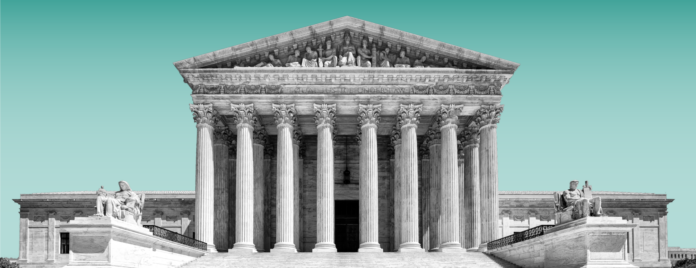The US Supreme Court adopted a code of conduct for the first time, responding to a stream of ethics controversies that have undercut its public standing and shined new light on the justices’ friendships and financial dealings.
The code won’t necessarily mean significant changes in how the nine justices conduct themselves. The court said the rules were mostly a “codification” of existing principles, and the justices stopped short of creating a system for the public to lodge complaints or for outside review of alleged violations.
The absence of a code “has led in recent years to the misunderstanding that the justices of this court, unlike all other jurists in this country, regard themselves as unrestricted by any ethics rules,” the court said in a one-paragraph statement that accompanied the new rules. “To dispel this misunderstanding, we are issuing this code.”
The high court under Chief Justice
The new code received mixed reviews from the court’s critics, including Democratic Senator
No Complaint System
The Supreme Court has never been bound by all of the strictures that apply to the rest of the federal judiciary, though the justices say they have followed most of the rules voluntarily. Lower federal judges since 1973 have been subject to a code of conduct crafted by the Judicial Conference, which sets policy for the US courts.
The Judicial Conference issues detailed regulations that spell out how the code works in practice, and publishes advisory opinions responding to questions from judges about how to apply the code to specific situations they encounter in the real world.
The high court said Monday it will incorporate the Judicial Conference rules selectively. The new rules say the justices comply with the gift and disclosure regulations set out by the Judicial Conference. Those rules include new guidelines requiring broader disclosure of private plane flights and lodging at commercial properties.
But the high court opted not to adopt the type of complaint system that applies to other judges. Allegations of misconduct against federal district and circuit court judges can go through several layers of review by panels of other judges.
In lieu of a concrete enforcement process, the document states that Roberts had directed court staff to do a review of “best practices” based on systems already in place in the lower courts. The court didn’t provide a deadline for that review or say what action the justices might take in response.
Thomas Signs
All nine justices signed their name to the new code, including Thomas, whose conduct has come under the greatest scrutiny. Thomas has been the subject of a series of ProPublica stories detailing how Crow funded luxury vacations, private jet flights, real estate purchases, and school tuition payments for one of Thomas’s family members.
In addition, a Senate inquiry in October found that Thomas never repaid “a significant portion” of the principal – and perhaps nothing at all beyond interest payments – on a $267,000 loan from a longtime friend for the purchase of a luxury recreational vehicle.
Thomas has also drawn criticism for not disqualifying himself from cases involving the 2020 election and its aftermath. His wife, conservative activist Virginia “Ginni” Thomas, was among those who urged the White House to do more to try to overturn the election results.
Several justices had been hinting over the past few months that the court was working on a code. Justice
(Updates with reaction from Whitehouse in sixth paragraph.)
–With assistance from Emily Birnbaum-bsp-person>.
To contact the reporters on this story:
To contact the editors responsible for this story:
Elizabeth Wasserman
© 2023 Bloomberg L.P. All rights reserved. Used with permission.
